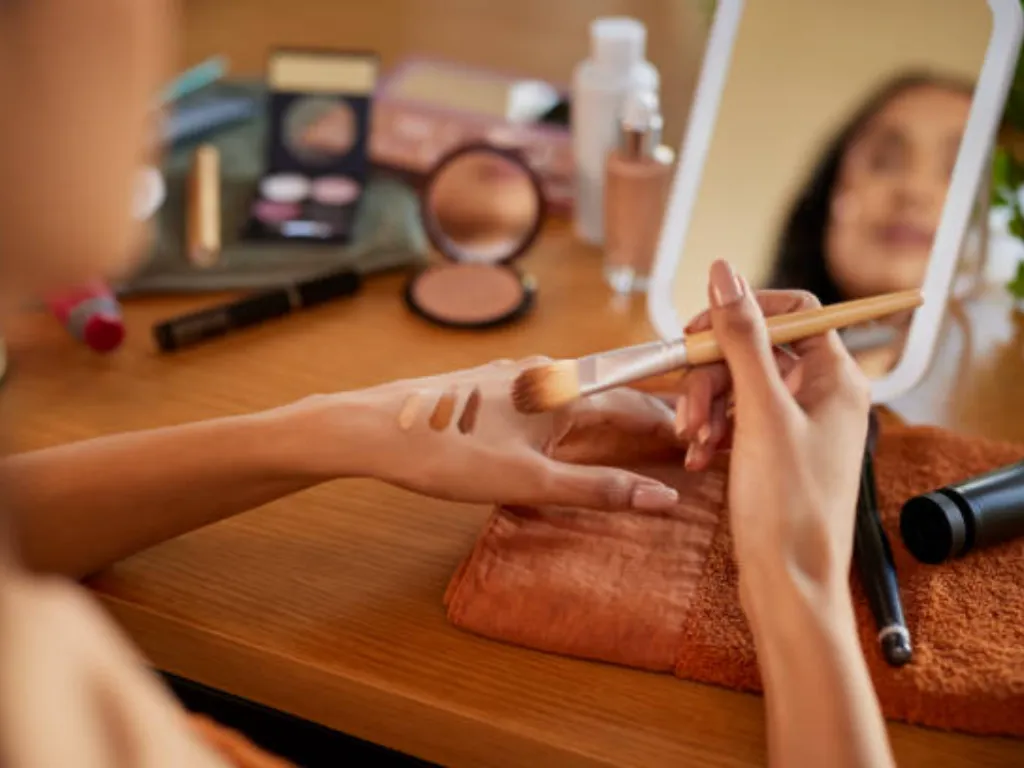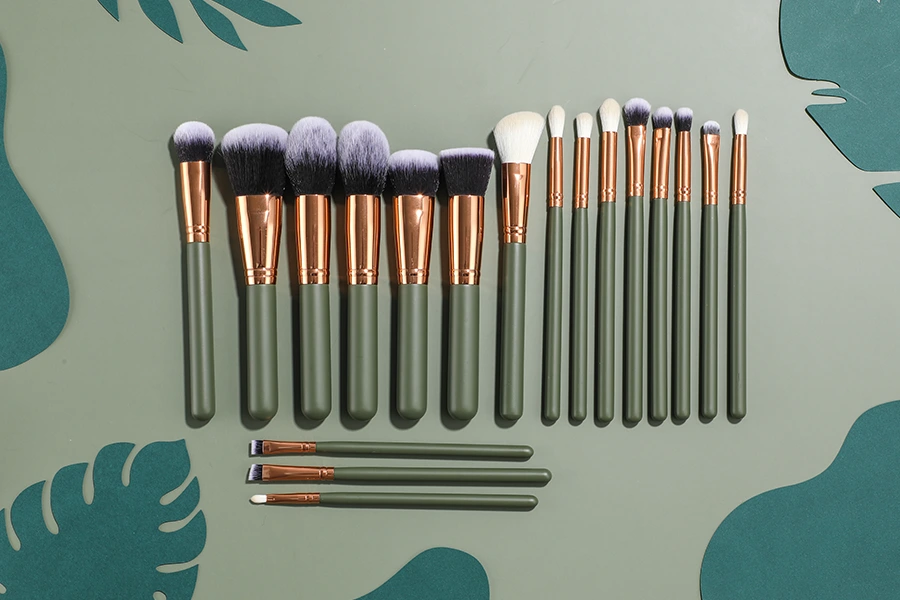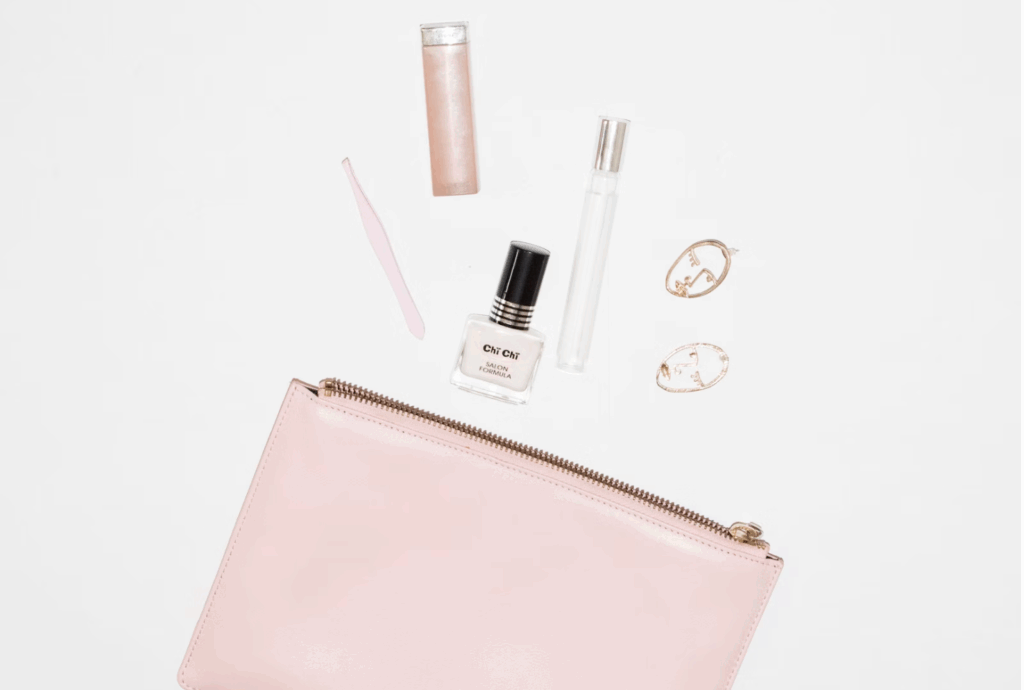صناعة التجميل تتطور دائمًا, مع اتجاهات ومنتجات جديدة ناشئة يوميًا. سواء كنت متحمسًا للعناية بالبشرة أو المكياج, قد يكون فتح متجرك التجميلي فرصة مجزية. لكن, الغوص في عالم البيع بالتجزئة في عالم الجمال ليس بهذه البساطة كما يبدو. هناك بحث, تخطيط, والعديد من الخطوات الرئيسية التي يجب متابعتها. في هذا الدليل, سنقوم بتجولك عبر كل ما تحتاج لمعرفته حول كيفية إعداد متجر تجميلي - من مرحلة البحث الأولية إلى الافتتاح الكبير لمتجرك.
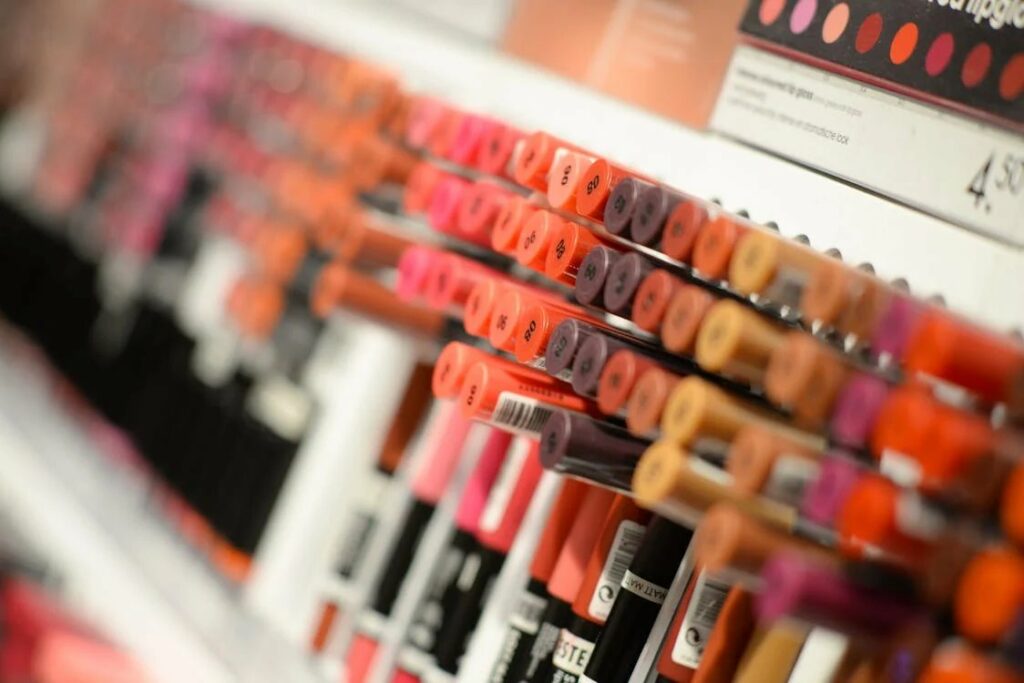
لماذا تبدأ عمل تجميلي?
تستمر صناعة مستحضرات التجميل في الازدهار على مستوى العالم, مدفوعًا بمتزايد الطلب على العناية بالبشرة, ماكياج, ومنتجات التجميل. مع وضع المستهلكين أكثر قيمة على الرعاية الذاتية والاستمالة الشخصية, يقدم السوق فرصًا هائلة.
أسباب لبدء عمل تجميلي:
- إمكانات الإبداع وبناء العلامة التجارية
- هوامش عالية الربح, خاصة في الملصقات الخاصة والمنتجات المتميزة.
- تزايد اهتمام المستهلك في الرعاية الذاتية, جمال, والعافية.
- القدرة على الاستفادة من الأسواق المتخصصة مثل مستحضرات التجميل النباتية أو العضوية.
- غرفة للتوسع مع التجزئة عبر الإنترنت والتوسع العالمي.
- إمكانات العمل القوية المتكررة بسبب قاعدة العملاء المخلصين.
الآن بعد أن رأيت الفوائد, دعنا نستكشف كيفية بدء عمل تجميل التجزئة التجميلي من خلال فهم المتطلبات والخطوات الأساسية للنجاح.
ماذا أحتاج لبدء عمل تجميلي?
لبدء عمل تجميلي بنجاح, من الضروري فهم العوامل الحاسمة التي تؤثر على أساس علامتك التجارية. دعنا نفحص كل من هؤلاء.
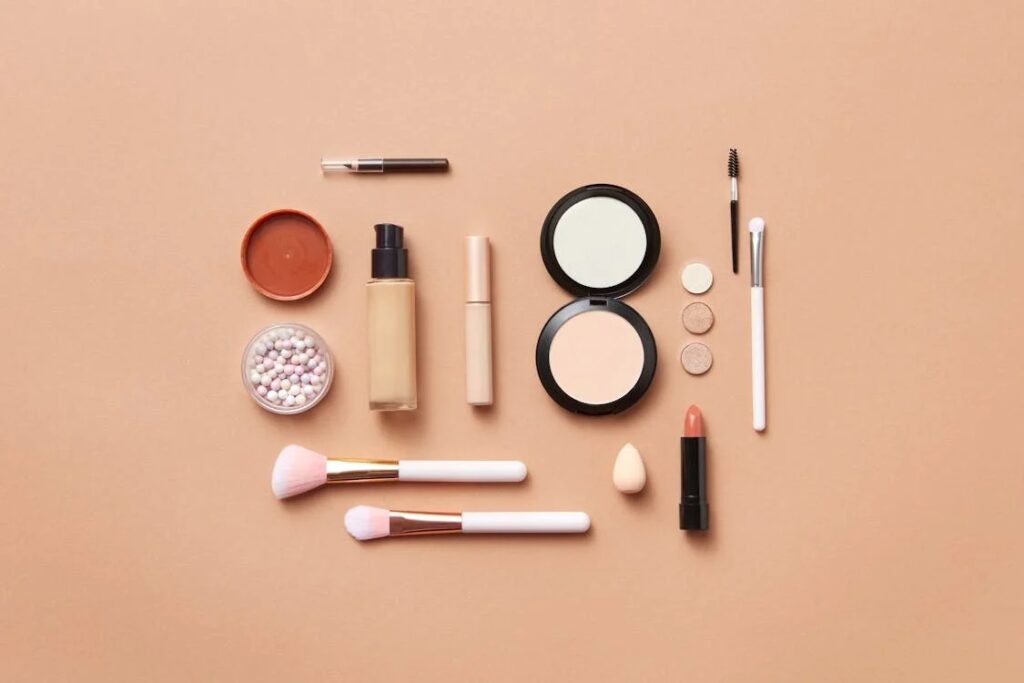
تعرف على المتطلبات القانونية
قبل الغوص في, تعرف على اللوائح في منطقتك. في الولايات المتحدة, تقوم إدارة الأغذية والعقاقير بمراقبة مستحضرات التجميل, التأكد من أن المكونات آمنة ومصورة بشكل صحيح. إذا كنت خارج الولايات المتحدة, مثل في الاتحاد الأوروبي, الأمور أكثر صرامة - يجب أن تلبي المنتجات معايير سلامة محددة مثل تنظيم مستحضرات التجميل في الاتحاد الأوروبي (EC) لا 1223/2009 قبل ضرب الرفوف. من الذكي الحصول على المشورة القانونية لضمان تلبية منتجاتك جميع المتطلبات.
حدد جمهورك المستهدف
العملاء هم هدفك النهائي, لذلك عليك أن تعرف بالضبط من الذي تبيعه. هل تستهدف عشاق الجمال في العشرينات من العمر, متعصبي العناية بالبشرة في الأربعينيات من العمر, أو ربما الأمهات تبحث عن منتجات آمنة لأطفالهن? كل مجموعة لديها احتياجات مختلفة وعادات شراء. على سبيل المثال, قد يتم سحب العملاء الأصغر سنا إلى العصرية, منتجات Instagrammable, في حين أن المستهلكين الأكبر سنا قد يفضلون جودة عالية, العناية بالبشرة المضادة للشيخوخة. لا يمكنك التخمين - إنه يتعلق بالبحث لفهم ما يريده جمهورك.
ابحث عن سوق متخصص
صناعة التجميل واسعة, لكن العثور على مكانة يمكن أن يساعدك على التميز وجذب العملاء المتفانين. فيما يلي بعض الأسواق المتخصصة الشائعة التي تزدهر:
- جمال نظيف: يشعر العملاء بالقلق بشكل متزايد بشأن المواد الكيميائية الضارة في منتجاتهم. يركز الجمال النظيف على الطبيعي, المكونات غير السامة. هذا السوق ينمو بسرعة, من المتوقع أن تصل المبيعات $22 مليار من قبل 2026.
- منتجات نباتية وخالية من القسوة: المستهلكون أكثر وعيا برفاهية الحيوانات, قيادة الطلب على مستحضرات تجميل نباتية وخالية من القسوة. من المتوقع أن ينمو سوق الجمال النباتي بشكل كبير في السنوات القادمة.
- الاستمالة للرجال: منتجات الاستمالة للرجال, بما في ذلك العناية بالبشرة والمكياج, في ارتفاع. المزيد من الرجال أصبحوا مهتمين بالرعاية الذاتية والمظهر, ويستمر هذا السوق في التوسع.
- جمال مستدام: كما ينمو الوعي البيئي, أصبحت العبوات المستدامة والمصادر الأخلاقية أولوية للعديد من المتسوقين التجميل. يمكن أن يساعدك تقديم التغليف القابل لإعادة التدوير أو القابل للتحلل الحيوي على الاستفادة من هذا السوق.
- منتجات مضادة للشيخوخة: مع شيخوخة السكان, لا تزال العناية بالبشرة المضادة للشيخوخة مكانة قوية. غالبًا ما يستثمر الناس في الأربعينيات وما بعده في الجودة العالية, المنتجات الفعالة التي تعد بشرة أكثر سلاسة وتقلل من التجاعيد.
وضع خطة عمل
خطة العمل هي خريطة الطريق الخاصة بك, تحدد المكان الذي تريد أن يذهب إليه عملك التجميلي وكيف ستصل إلى هناك. لا يلزم أن يكون معقدًا بشكل مفرط, ولكن يجب أن يغطي المجالات الرئيسية لإعدادك للنجاح, مثل المنتجات التي تبيعها, من الذي تبيعه, وما الذي يجعلك مختلفًا. فيما يلي الجوانب الأساسية التي يجب عليك مراعاتها:
- وصف العمل
- أبحاث السوق وتحليلها
- تكاليف بدء التشغيل
- المبيعات والنفقات المتوقعة
- استراتيجية التسويق
- خطة العمليات
- مصادر المنتج والتصنيع
- التوقعات المالية
- خطة خدمة العملاء
- الاعتبارات القانونية والتنظيمية
- استراتيجية النمو
اختر بنية العمل المناسبة
عند بدء عمل تجميلي, يعد اختيار الهيكل المناسب أمرًا ضروريًا للحماية القانونية, الضرائب, والعمليات. فيما يلي الخيارات الشائعة ومن يعملون بشكل أفضل:
- الملكية الوحيدة: الأفضل لرجال الأعمال الفرديين بدأوا للتو. من السهل الإعداد والإدارة, لكنك مسؤول شخصيًا عن أي ديون أو قضايا قانونية.
- شراكة: مثالي إذا كنت تبدأ شركة مع شريك واحد أو أكثر. يشارك كل شريك الأرباح, خسائر, والمسؤوليات. مثل الملكية الفردية, يوفر حماية شخصية أقل.
- شركة مسؤولية محدودة (LLC): خيار رائع للشركات الصغيرة إلى المتوسطة الحجم. يوفر حماية مسؤولية شخصية مع تقديم المرونة الضريبية. إنه الخيار الأكثر شعبية لشركات مستحضرات التجميل.
- مؤسَّسة (C-Corp أو S-Corp): من الأفضل للشركات التي تخطط لتوسيع نطاقها بشكل كبير. تقدم الشركات أعلى مستوى من حماية المسؤولية وهي مثالية إذا كنت تبحث عن مستثمرين. إنها تأتي مع متطلبات ولوائح ضريبية أكثر تعقيدًا.
إنشاء استراتيجية تصنيع
تشمل استراتيجية تصنيع قوية لكل من المبتدئين وأصحاب الأعمال ذوي الخبرة اختيار الموردين, قرار بشأن ما إذا كان يجب التعامل مع الإنتاج في المنزل أو الاستعانة بمصادر خارجية, وتنفيذ صارم لمراقبة الجودة. إدارة المخزون بكفاءة, اختيار العبوة الصحيحة, وضمان عمليات الشحن السلس هي أيضًا مفتاح. تساعد هذه الاستراتيجية في الحفاظ على تناسق المنتج ودعم النمو القابل للتطوير مع الحفاظ على التكاليف والجودة في التوازن.
حدد مورد أداة المكياج
لا تنسى أدوات المكياج -فرش المكياج, مزيج الجمال والنفخ, والملحقات التجميلية مهمة مثل المنتجات نفسها. تم تعيين سوق فرشاة المكياج العالمي للضرب $3.3 مليار من قبل 2026, مما يدل فقط على مدى اهتمام الناس بهذه الأدوات. قد تجد موردًا يقدم منتجات عالية الجودة ويمكنه الاحتفاظ بمخزونك دون تأخير.
كيفية إنشاء متجر مستحضرات التجميل: الخطوات الأساسية
بمجرد الانتهاء من العمل الأساسي, لقد حان الوقت للغوص في تفاصيل كيفية بدء متجر المكياج. من اختيار الموقع الصحيح إلى توظيف وتدريب موظفي, تلعب كل خطوة دورًا رئيسيًا في نجاح متجرك.

حدد موقع المتجر
الموقع هو كل شيء عند فتح متجر ماكياج. للعلامات التجارية الراقية, تعمل المواقع الرئيسية في مناطق التسوق الراقية أو مراكز التسوق الفاخرة بشكل جيد, جذب الديموغرافي المستهدف الذي يتوقع التفرد. لكن, إذا كنت على ميزانية, اختر أصغر, منطقة ذات أقدام عالية أو مركز تسوق مع انخفاض معدلات الإيجار. بالإضافة إلى ذلك, يمكن لمواقع بالقرب من الشركات الأخرى المتعلقة بالجمال أو تجار التجزئة التكميليين جذب العملاء المهتمين بالفعل بعروضك.
صمم تخطيط متجرك
للمبتدئين, تصميم مفتوح مع لافتات واضحة ومناطق مخصصة لفئات المنتجات المختلفة - مثل العناية بالبشرة, ماكياج, والأدوات - تعمل بشكل جيد. يمكنك ضمان إضاءة جيدة لتسليط الضوء على المنتجات, مع المرايا والمختبرات لتجربة عملية. ثم ضع عناصر عالية الطلب على مستوى العين لجذب الانتباه, في حين يمكن عرض العناصر الفاخرة أو عالية الهامش في شاشات العرض المميزة.
المنتجات المصدر والتعبئة والتغليف
منتجاتك هي جوهر متجرك التجميلي, لكن التغليف مهم بنفس القدر. مستحضرات التجميل المصدر من الموردين ذوي السمعة الطيبة الذين يلبيون معايير السلامة ومعايير الجودة. أما بالنسبة للتعبئة والتغليف, يختار أكياس المكياج والصناديق التي تعكس علامتك التجارية. على سبيل المثال, يمكن أن تجذب العبوة الصديقة للبيئة المستهلكين الواعيين للبيئة, بينما فاخر, يمكن أن تجذب الصناديق المذهلة التي تجذب أولئك الذين يبحثون عن منتجات متميزة. لا تتغاضى عن التغليف الواقي الخارجي لأغراض الشحن - متيح, التغليف الجذاب يضمن وصول منتجاتك بأمان.
إعداد نقطة البيع
يمكنك الاستثمار في نظام POS الذي يتكامل بسهولة مع المخزون والمبيعات الخاصة بك. أنظمة نقاط البيع الحديثة تقبل أيضًا طرق الدفع المختلفة, من بطاقات الائتمان إلى مدفوعات الهاتف المحمول, الذي يفضله العملاء بشكل متزايد. للمبتدئين, توفر الأنظمة المستندة إلى مجموعة النظراء مثل Square أو Shopify إعدادًا وسهولة التوسع.
استئجار وتدريب الموظفين
فريقك هو وجه متجرك التجميلي, لذا فإن توظيف الموظفين المناسبين أمر ضروري. قد تبحث عن أفراد متحمسين للجمال وله اهتمام حقيقي بخدمة العملاء. توفير تدريب شامل يغطي معرفة المنتج, التقنية القذرة, وكيفية التعامل مع استفسارات العملاء أو الشكاوى. للمبتدئين, يجب أن يكون الموظفون أيضًا على دراية بتخطيط متجرك ونظام نقاط البيع.
كيفية تسويق متجرك التجميلي الجديد?
بمجرد إعداد متجر المكياج الخاص بك, حان الوقت للتركيز على التسويق لجذب العملاء. من وسائل التواصل الاجتماعي إلى الأحداث في المتجر, هناك طرق عديدة لزيادة الرؤية ودفع المبيعات.
الاستفادة من وسائل التواصل الاجتماعي
منصات مثل Instagram, تيخوك, و Pinterest مثالية لعرض منتجاتك من خلال جذب الصور ومقاطع الفيديو. يمكنك مشاركة البرامج التعليمية, محتوى خلف الكواليس, ومراجعات العملاء. يمكنك حتى تشغيل إعلانات مدفوعة الأجر تستهدف التركيبة السكانية المحددة لتنمية جمهورك بشكل أسرع.
شريك مع المؤثرين
يمكنك التعاون مع المؤثرين الذين يتماشون مع قيمك واستهداف الديموغرافي لعرض منتجاتك في سيناريوهات الحياة الواقعية. على سبيل المثال, يمكن لمؤثر الجمال أن يعرض منتجات المكياج الخاصة بك في برنامج تعليمي, تشجيع أتباعهم على زيارة متجرك.
استخدم الإعلانات المحلية
يمكنك النظر في الأساليب التقليدية مثل النشرات, الملصقات, أو إعلانات الصحف التي تستهدف عشاق الجمال المحلي. يمكنك أيضًا الإعلان عن محطات الإذاعة المحلية أو شريكًا مع الشركات المحلية لتوحيد علامتك التجارية. يساعدك استخدام الإعلانات الجغرافية المستهدفة على منصات الوسائط الاجتماعية مثل Facebook أو Google أيضًا على التواصل مع العملاء في منطقتك المحددة.
استضافة الأحداث في المتجر
أحداث في المتجر مثل مظاهرات الماكياج, إطلاق المنتج, أو يمكن أن تتعامل ورش عمل التجميل مع العملاء مباشرة. يمكن أن يؤدي تقديم الهدايا المجانية أو خصومات محدودة في الأحداث أيضًا إلى تشجيع عمليات الشراء. على سبيل المثال, حدث "يوم تحول" حيث يحصل العملاء على تطبيق مكياج مجاني يمكن أن يزيد من حركة المرور وولاء العلامة التجارية.
إنشاء الترقيات الموسمية
يمكنك تقديم خصومات, هدية مع صفقات الشراء, أو منتجات محدودة الإصدار في جميع أنحاء العطلات مثل عيد الميلاد, عيد الحب, أو موسم العودة إلى المدرسة. التغليف تحت عنوان أو حزم حصرية يمكن أن تضيف الإثارة, جعل العملاء يشعرون بأنهم يحصلون على شيء مميز.
تقديم خصومات حصرية
الخصومات الحصرية هي وسيلة رائعة لتحفيز المشتريات وبناء ولاء العملاء. يمكنك تقديم صفقات خاصة للعملاء لأول مرة, مثل نسبة مئوية من أول عملية شراء أو هدية مجانية. يمكنك أيضًا إنشاء برامج ولاء, تقديم نقاط لكل عملية شراء يمكن استبدالها بالخصومات أو المنتجات المستقبلية. تساعد هذه الاستراتيجيات على تحويل المتسوقين لمرة واحدة إلى عملاء متكررين.
بناء حملات البريد الإلكتروني
يمكنك جمع عناوين البريد الإلكتروني من خلال موقع الويب الخاص بك أو التسجيلات في المتجر, ثم أرسل رسائل إخبارية منتظمة مع تحديثات على منتجات جديدة, مبيعات, ونصائح الجمال. ثم قم بتقسيم قائمة بريدك الإلكتروني بناءً على سلوك العميل أو تفضيلاتها لتقديم محتوى مخصص, زيادة فرص البيع. العروض الخاصة, خصومات عيد الميلاد, أو يمكن الوصول المبكر إلى المبيعات إلى تشجيع الاحتفاظ بالعملاء.
كيف ترضي عملائك في المتجر?
بمجرد أن يدخل العملاء إلى متجرك التجميلي, خلق إيجابية, تجربة لا تنسى ضرورية لبناء الولاء وتكرار الأعمال. من الخدمة المخصصة إلى عملية الخروج السلس, إليك كيفية جعل كل زيارة استثنائية.
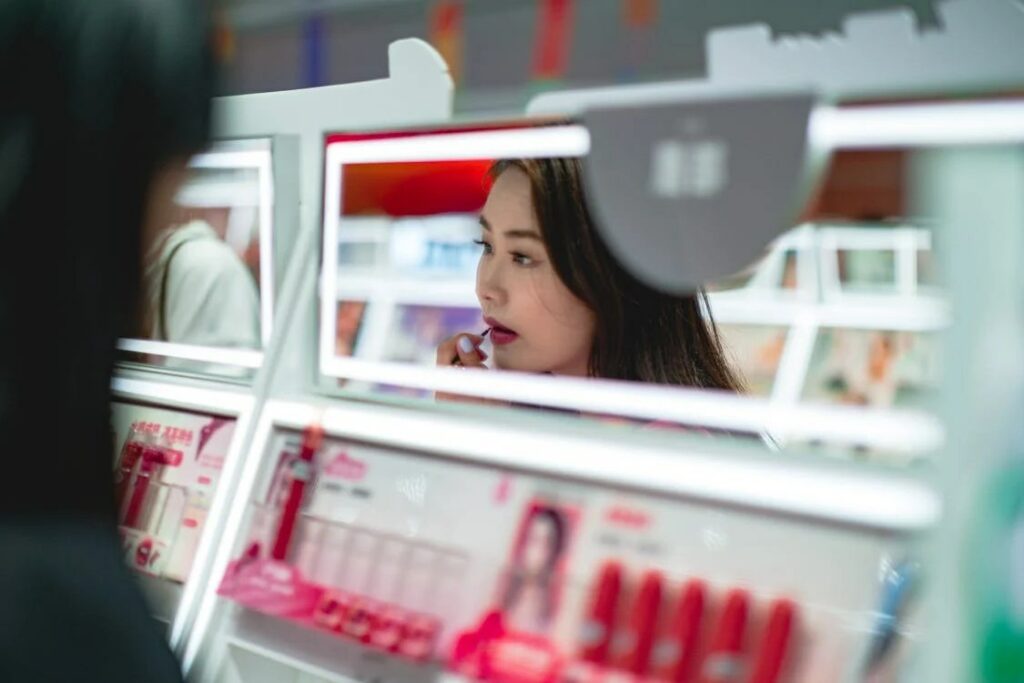
تقديم خدمات شخصية
التخصيص يجعل العملاء يشعرون بالتقدير. تحية لهم بالاسم إن أمكن, وتقديم توصيات منتج مصممة بناءً على تفضيلاتهم أو نوع الجلد. على سبيل المثال, إذا كان العميل يبحث عن أساس, اسأل عن لون بشرتهم وملمسهم لاقتراح التوافقت المثالية.
تقديم نصيحة الخبراء
يزور العملاء متاجر التجميل لأكثر من مجرد منتجات - غالبًا ما يبحثون عن مشورة الخبراء. يجب عليك تدريب موظفيك على تقديم توصيات على دراية بشأن روتين العناية بالبشرة, تقنيات المكياج, وأحدث اتجاهات الجمال.
تأكد من عملية الخروج السريع
يمكن أن يدمر الخروج البطيء تجربة التسوق, لذلك من الضروري أن تبقي الأمور تتحرك. لتبسيط العملية, فكر في تقديم خيارات الفحص الذاتي أو أساليب الدفع عبر الهاتف المحمول. الخدمة السريعة تجعل العملاء أكثر عرضة للعودة والتوصية متجرك.
عرض مكافآت الولاء
تشجع برامج الولاء العملاء على الاستمرار في العودة. يمكنك إنشاء نظام مكافآت حيث يكسب العملاء نقاطًا لكل عملية شراء, التي يمكن استردادها للحصول على خصومات أو منتجات حصرية. مكافآت تحفيز عمليات الشراء المتكررة والمساعدة في تعزيز الشعور بالمجتمع حول علامتك التجارية.
التعامل مع الشكاوى بأمان
كيفية التعامل مع الشكاوى يمكن أن تصنع أو كسر ولاء العملاء. تدريب الموظفين على الاستماع باهتمام, التعاطف مع العميل, وتقديم حل. سواء كان ذلك عائدًا منتجًا أو مشكلة في الخدمة, يمكن للتعامل مع الشكاوى على الفور ومهنية تحويل عميل غير راضٍ إلى شخص مخلص.
الحفاظ على النظافة والنظام
يعكس متجر نظيف ومنظم الاحتراف ويعزز تجربة التسوق. قد تبقي الرفوف جيدة التجهيز ومرتبة, وتأكد من أن المختبرين, المرايا, ويتم تنظيف العروض بانتظام وتطهيرها. المتجر الأنيق ليس أكثر جاذبية فحسب ، بل يؤكد أيضًا للعملاء أنك تهتم بالمنتجات والخدمات التي تقدمها.
كم من المال تحتاج لبدء عمل تجميلي?
تختلف تكلفة بدء عمل تجميلي بناءً على حجم ونطاق عملياتك. لمتجر صغير, قد تتوقع أن تنفق بين $10,000 و $50,000 على المخزون, معدات, والإعداد الأولي. يمكن أن يكلف متجر متوسط الحجم بين $50,000 و $150,000, اعتمادًا على الموقع ومدى المنتجات. يمكن أن تتجاوز المتاجر الكبيرة أو تلك التي لديها مخزون أكثر شمولاً $200,000.
للمبتدئين بميزانية محدودة, يمكنك التفكير في التركيز على المبيعات عبر الإنترنت في البداية, تقليل التكاليف العامة, والبدء بمخزون صغير. إذا كنت تريد معرفة المزيد, الرجاء استكشاف الطرق كيف تبدأ شركة مكياج بدون مال, مثل استخدام نماذج Dropshipping, الاستفادة من وسائل التواصل الاجتماعي للتسويق, أو الشراكة مع الموردين الحاليين.
خاتمة
من خلال النظر بعناية في جميع الخطوات, من المتطلبات القانونية إلى استراتيجيات التسويق, ستكون مجهزًا جيدًا للتنقل في التحديات والازدهار في صناعة التجميل. يعد فهم كيفية إنشاء متجر تجميلي الخطوة الأولى نحو بناء ناجحة, أعمال طويلة الأمد. الآن بعد أن حصلت على المعرفة الأساسية, حان الوقت لتحويل حلمك إلى واقع. جاهز للبدء? دعنا نجعل متجرك التجميلي نجاحًا!
التعليمات
س 1: هل أحتاج إلى شركة ذات مسؤولية محدودة لشركة مكياج?
في حين أن LLC ليست إلزامية, يقدم فوائد مثل المسؤولية المحدودة والمرونة الضريبية, جعلها خيارًا شائعًا لأصحاب الأعمال.
Q2: كيف تنظم متجر تجميل?
ينطوي تنظيم متجر مستحضرات التجميل على التركيز على تخطيط المتجر, تصنيف المنتج, إدارة المخزون, وخلق تجربة تسوق جذابة. يمكنك التأكد من وجود بنية واضحة لشاشات المنتج وسهولة الوصول إلى العناصر الشائعة.














